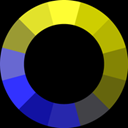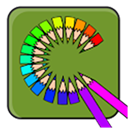Top Coblis Alternatives for Simulating Color Blindness
If you've ever wondered how the world looks through the eyes of someone with a color vision deficiency, Coblis, the Color BLIndness Simulator, is an excellent tool. It allows users to upload images and see them as if they had various forms of color blindness. However, for those seeking different features, platforms, or more specialized simulations, exploring a Coblis alternative can be highly beneficial. This guide highlights some of the best alternatives to help you visualize color perception differences more effectively.
Best Coblis Alternatives
While Coblis is a fantastic starting point, several other applications and tools offer unique advantages, from real-time simulations to integration with design workflows. Here are some top Coblis alternatives worth exploring:

Sim Daltonism
Sim Daltonism is a robust Coblis alternative that allows you to visualize colors as they are perceived with various types of color vision deficiencies. It's an open-source tool available for Mac, making it a great free option for those who prioritize transparency and community development. Its focus on accessibility makes it a strong contender for anyone needing to understand color perception.

Vision
Vision is a unique Coblis alternative designed to help people with color blindness see more colors through real-time daltonization of images. Available as Freemium software for Windows and Chrome, Vision offers a different approach by enhancing colors rather than just simulating deficiencies, providing a potentially more helpful perspective for some users.

Colorblinding
Colorblinding is a highly convenient Coblis alternative, offered as a Chrome extension that simulates websites as a color vision impaired person would see them. It supports simulations for various conditions like Red-Blind / Protanopia and is available as free, open-source software for Mac, Windows, Linux, and Chrome, making it versatile for web developers and designers focusing on accessibility.

Colorblind Web Page Filter
The Colorblind Web Page Filter is a straightforward web-based Coblis alternative. You simply enter a URL, and the tool renders it as someone with color blindness would perceive it. With a multitude of available filters simulating various color vision deficiencies, it's a great free web tool for quick and comprehensive website accessibility checks.

Color Blind Vision
Color Blind Vision offers a mobile-first Coblis alternative experience, allowing you to see the world through colorblind vision directly on your Android device. It's a Freemium app that also includes a test to help you determine if you are colorblind, adding an interactive element to understanding color perception.

Stark
For designers using Sketch, Stark is an invaluable Coblis alternative. It functions as a color-blind simulator and contrast checker directly within Sketch, making it a free tool for Mac users that integrates accessibility considerations seamlessly into the design workflow.

Dalton
Dalton is another excellent Chrome extension Coblis alternative, specifically designed to help with colorblindness by identifying colors on web pages. This free tool is available for Mac, Windows, Linux, and Chrome, providing practical assistance for understanding and navigating color information online.

RGBlind
RGBlind is an open-source, real-time color blindness simulation tool for the web, making it a powerful Coblis alternative for Chrome, Firefox, and Opera users. It's free and supported across Mac, Windows, and Linux, developed to provide comprehensive accessibility insights into web content.

CanvasFlip - Colorblind Simulator
CanvasFlip - Colorblind Simulator is a free web-based Coblis alternative tailored for designers and marketers. It allows users to upload designs and visualize the experience of their colorblind users, focusing on UI testing and ensuring design accessibility.
Whether you're a designer, developer, educator, or simply curious, these Coblis alternatives offer a range of features and platforms to suit diverse needs. Explore them to find the best fit for understanding and designing for color vision deficiencies.